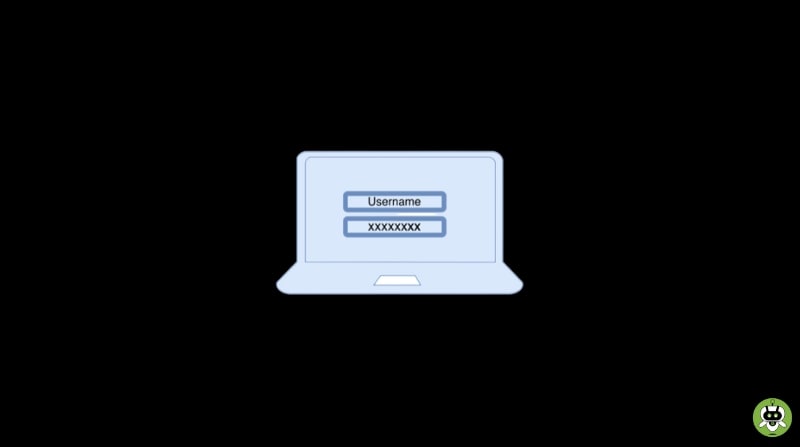Single-factor authentication or SFA is a procedure where a single wall of security stands between a user and a network or website. This can be found everywhere in the digital era. Wherever you have to put in passwords if you are dealing with single-factor authentication.
This type of security’s strength depends on the platform/system itself or the person who created the account in the first place. The best thing you can do in such cases is to create a strong and unusual password that no one has access to.
Password-Based Systems Problems With Potential Countermeasures
The first issue with password systems is that the users usually don’t know or don’t want to create a strong and unusual password. Even if they do it, they might not be able to remember it clearly. They will write it down or save it on their computer which is quite risky.
One more issue that annoys users is the forceful requirements to be matched to create a password. This also creates a problem in management and IT. Such passwords are easy to crack and hackers can crack them in minutes making the security a piece of cake without any real protection. People using sticky notes to remember passwords is considered a careless habit that can lead to issues.
Avoiding these things is necessary but also creating a password that is unpredictable is important. Password entropy test can see how strong your given password is and how much brute force, dictionary attacks, and other methods are necessary to break that password.
There are usually three types of authentications – knowledge, inherence, and possession.
So, now we know you need a stronger password with complex characters to be unpredictable. But one thing you need to keep in mind is that you need to learn how to remember those passwords without writing them down. Spamming down random numbers and letters will create a strong password, but you won’t be able to remember it. Length matters in password.
The longer your password is the harder it gets to crack it. To increase the unpredictable level, you can add Numbers, Cap Letters, Unique Characters, etc. The security meters that are shown while creating a password help us to know how complex it needs to be.
Now, doing all this does not mean you are totally safe. A hacker can use rainbow tables, brute force, or other attacks to capture your database of passwords. After you, it is the administrator’s job to protect what you have created. They need to have a strong server and system in order to keep hackers at bay. This can be done by putting in random characters to the password hashes encryption. This makes it more solid and immune to any kind of attack.
The evolution of the CPU is also making these threats become greater. CPU speed can help hackers quickly use all the methods to break your passwords. Even the graphic units can help to crack passwords in minutes. Your usual gaming mid-range PC can do such a task, imagine what a high-end PC can do in the wrong hands. With the right hardware, rainbow tables can crack a 16-character length password in just 160 seconds.
This procedure requires intense memory and with PC hardware upgrading each year the task of hackers is becoming easier. This means if your password database is already weak no matter what, a person with the right tools will be able to break in and get all the information.
Social engineering is another major threat to all password-based systems. To decrease such social engineering threats you need to educate everyone that password length and strength are nothing if a hacker tricks you into divulging. Even some people from IT fall for such scams where they give out their passwords to random people. Everyone needs to stay updated on phishing methods and tactics.
Fake emails and dangerous websites may try to obtain your password from you willingly. Trojans are also a type of threat that can be dangerous. In simple words, passwords are one of the most stolen types of authentication.
What’s the endgame here?
Some common securities are enough to keep danger out of your way. Sometimes having more security than you need is the best thing to do. Try to make it harder for anyone who wants your information. If you want to protect something sensitive then we recommend you have multi-factor authentication with multiple strong methods.
Multi-Factor Authentication Vs Single-Factor Authentication
These two authentication methods are sometimes considered the same. Many consider multi-factor authentication to be much better and stronger than single. But if done right, single-factor authentication can work like a charm. For instance, simple biometric security is enough protection.
Also, having multiple security questions can also help to create a bulky single-factor authentication. Single-factor authentication can be strong only if you implement the correct methods. Some other methods are finger vein scan, retina scan, and voice unlock.
Instead of having multiple authentication systems with weak methods, you should have a single factor with strong methods.
Single-factor authentication might not be the best case if you want to top most security. If you want the best protection possible go for multi-factor authentication or two-factor authentication with strong methods.
The topic is much deeper and more detailed, but this is enough information for you to know what single-factor authentication is. Hope you are staying safe and smart by keeping your passwords complex while remembering them instead of writing them down. In a digital era, you need to keep your belongings safe from people who are trying to eat on your hard-earned success.
You can always prefer multi-factor authentication with strong methods but if that’s not possible have just one method that is strong and not easy to break. If you can, you should always use methods such as biometrics and voice recognition. What do you think about single-factor authentication?

